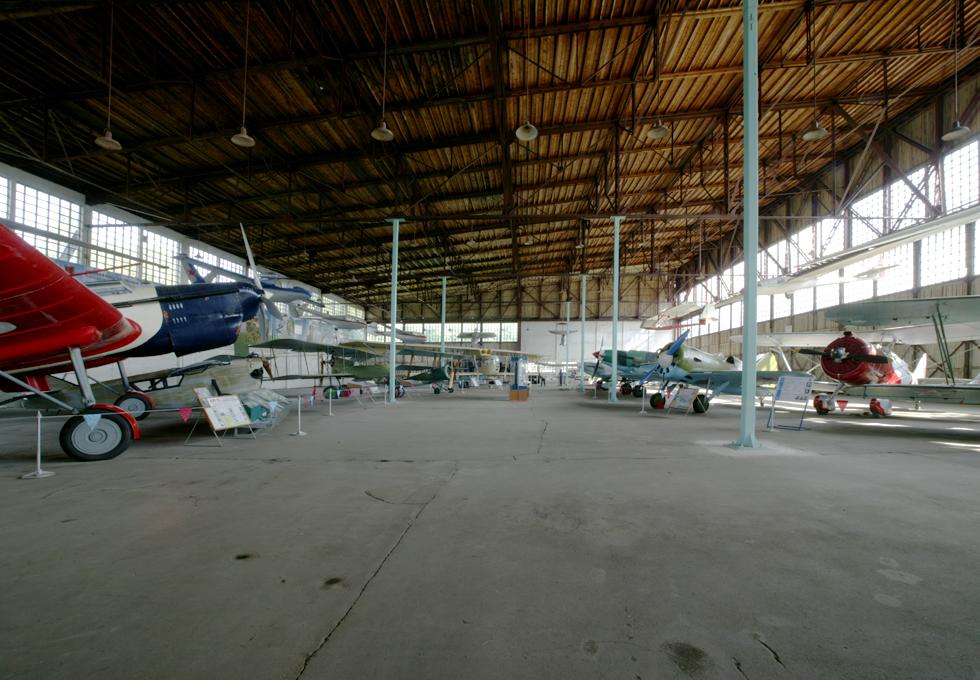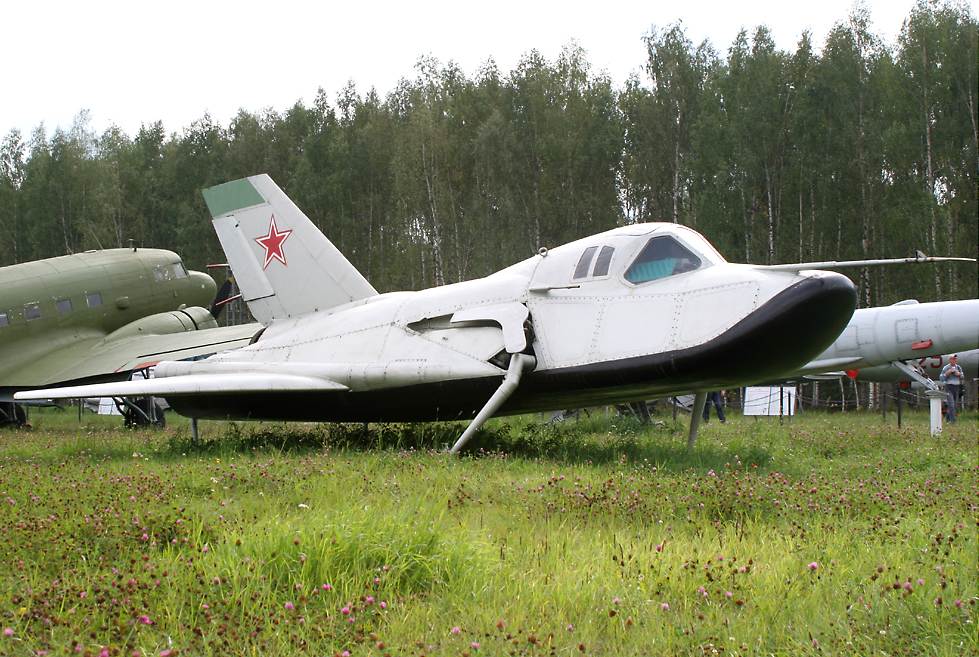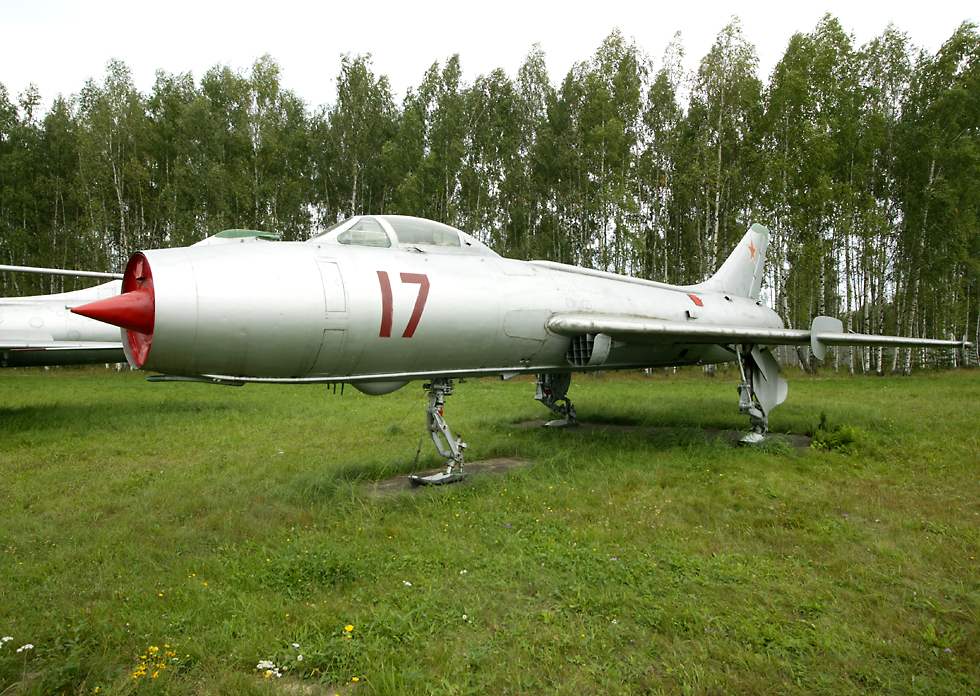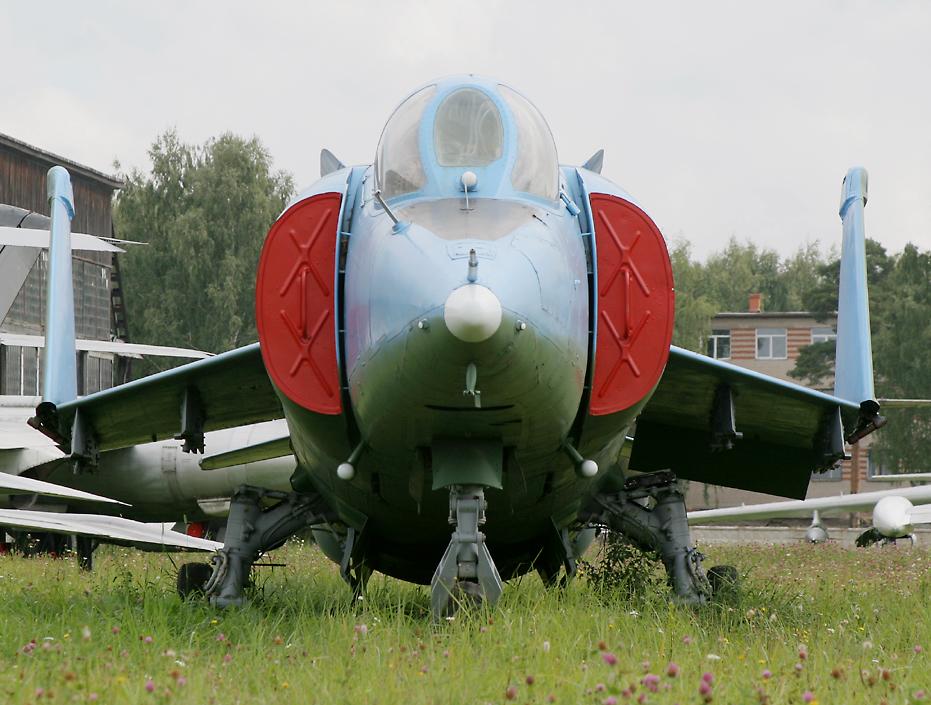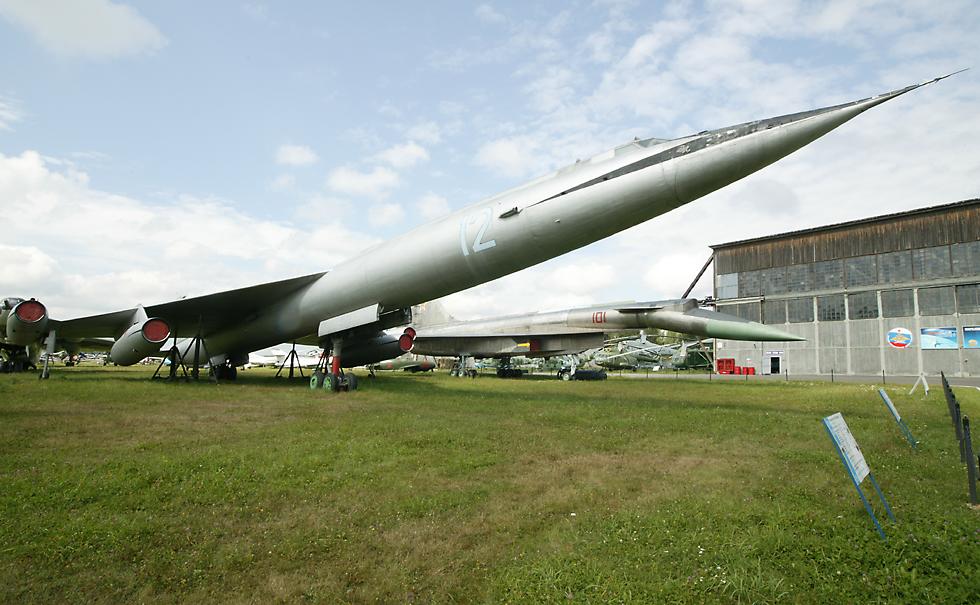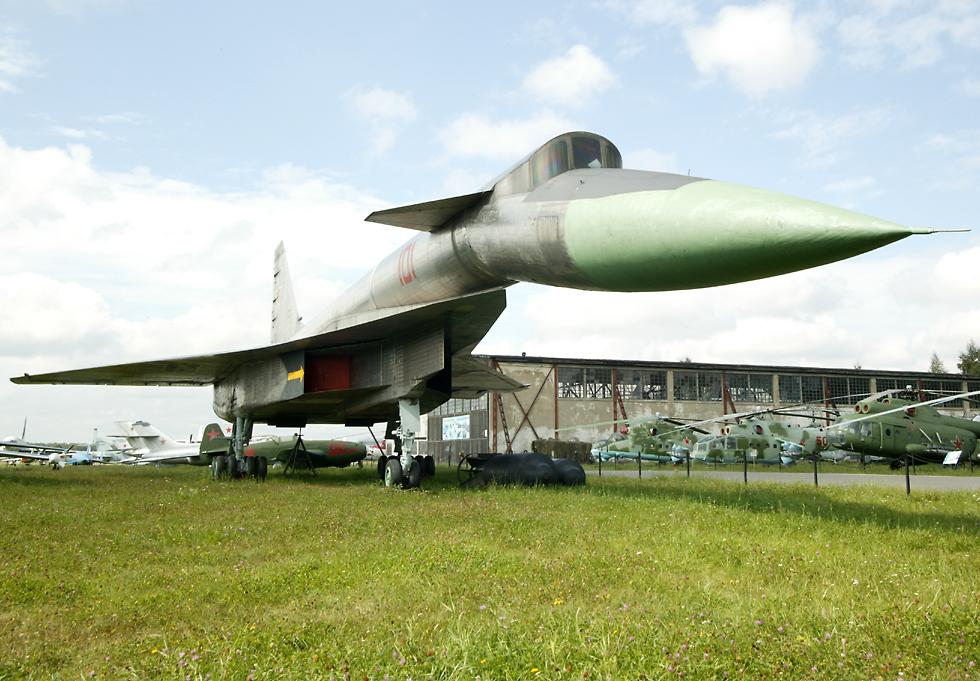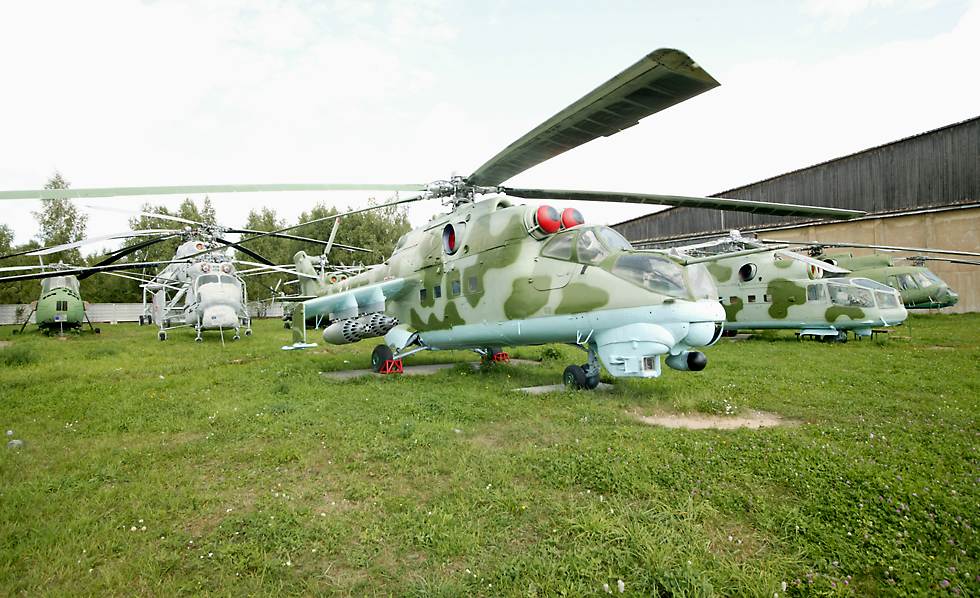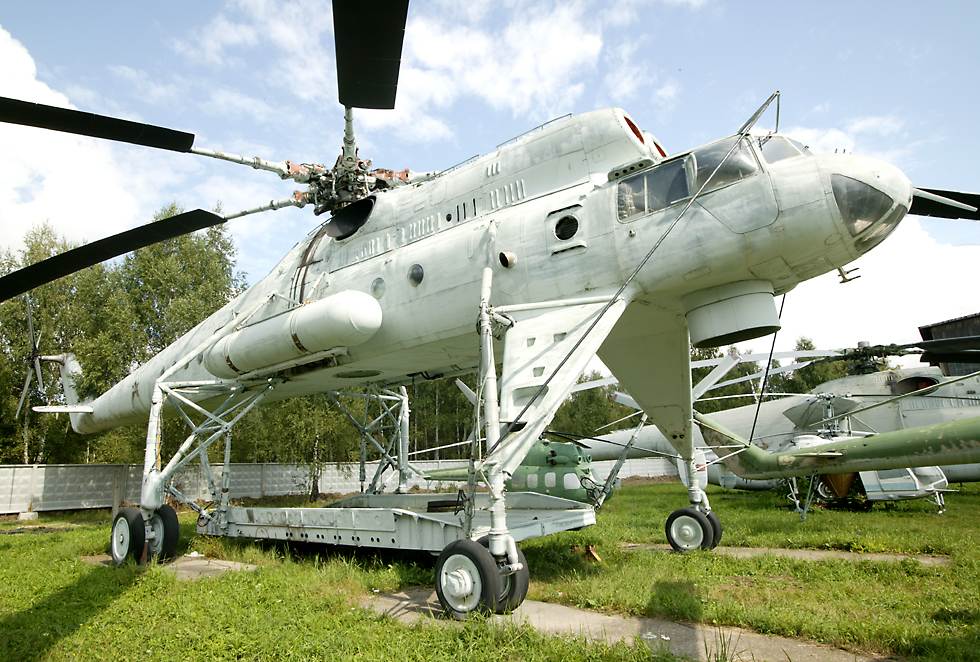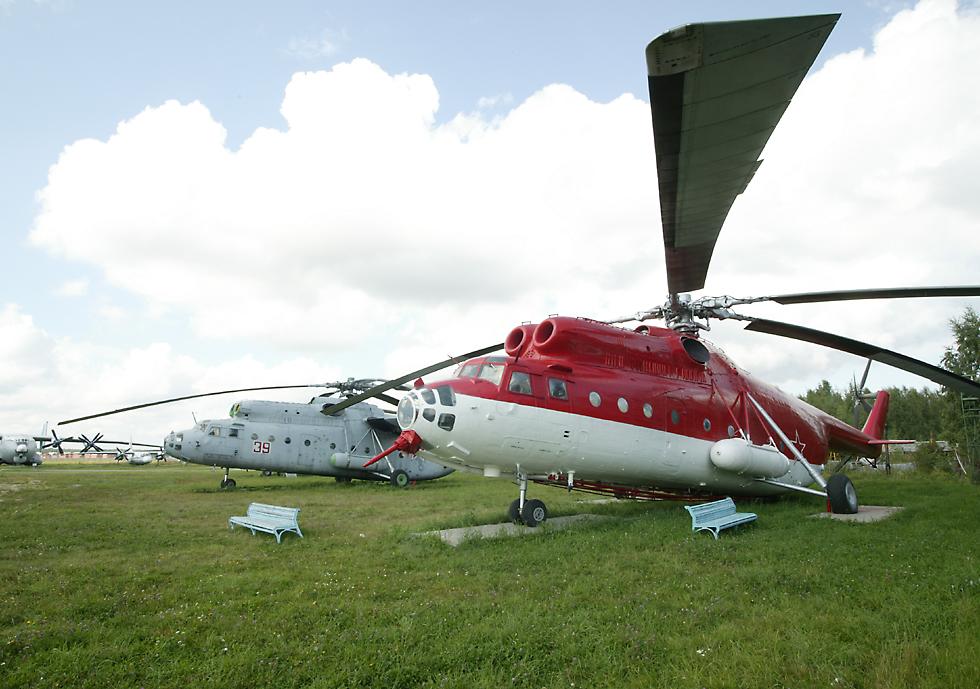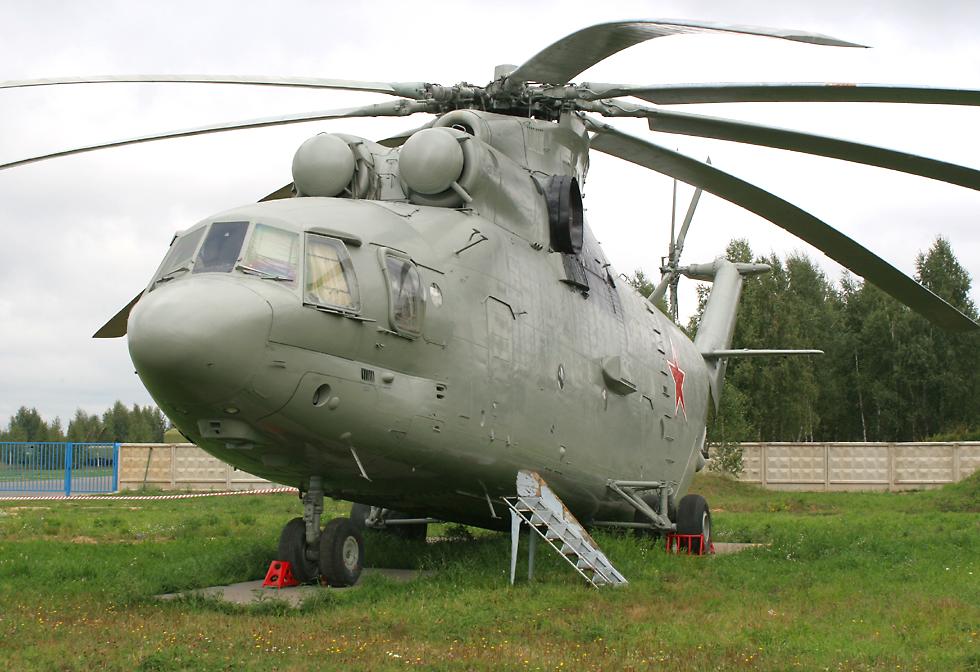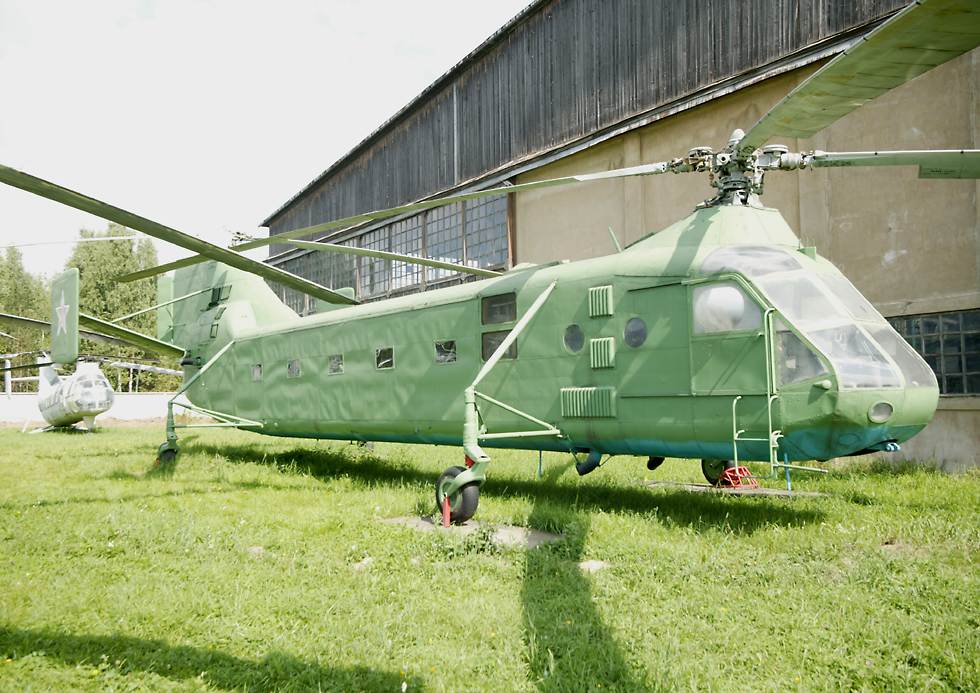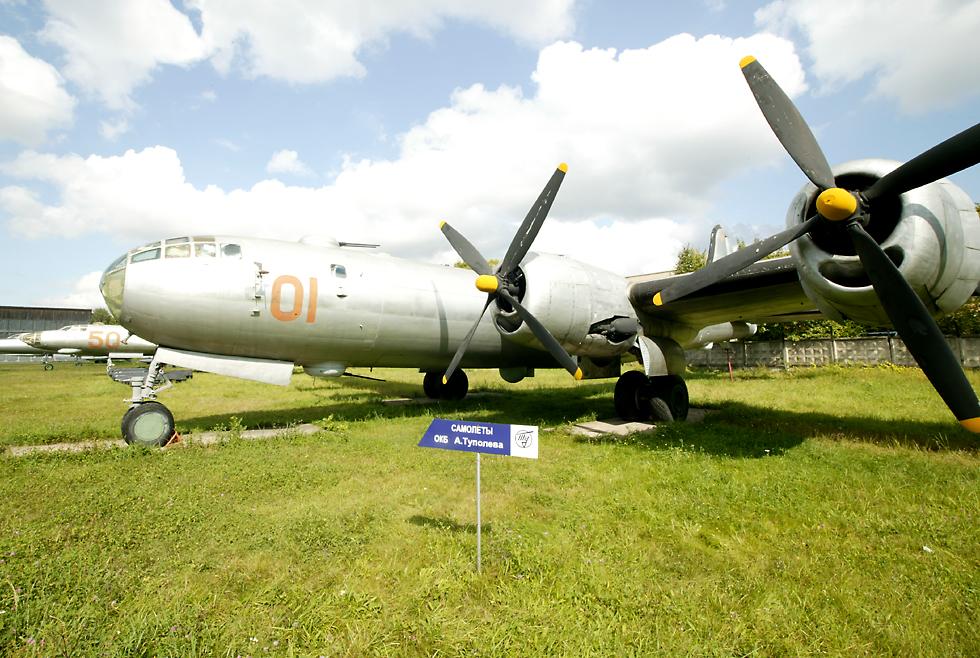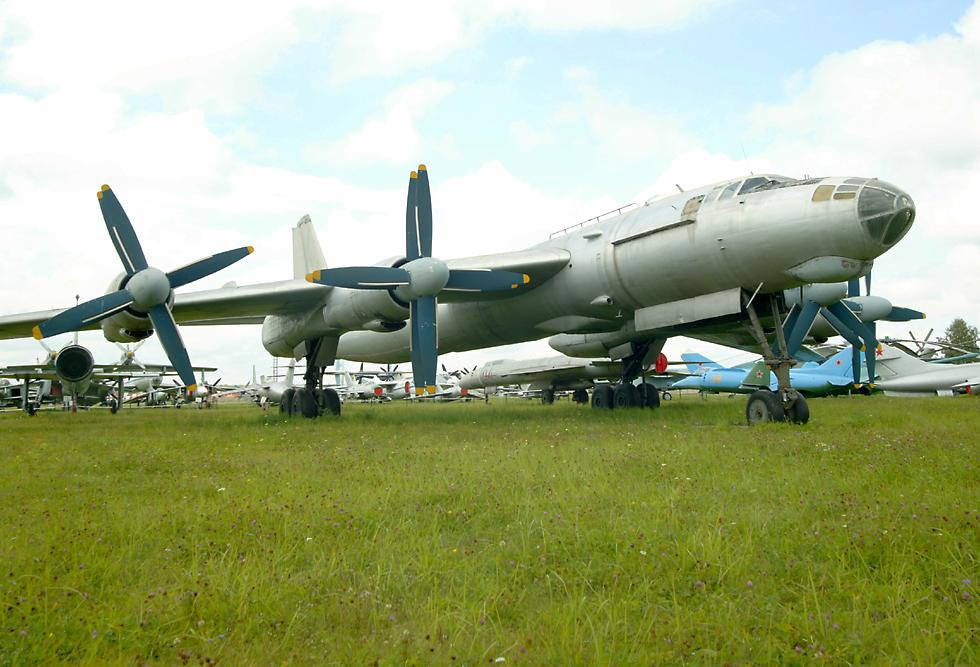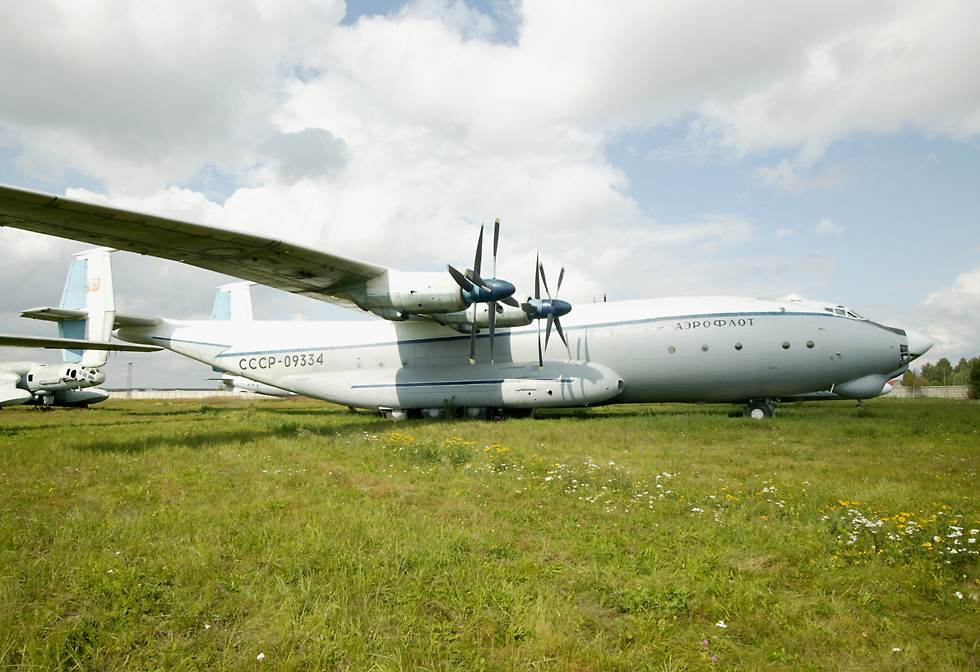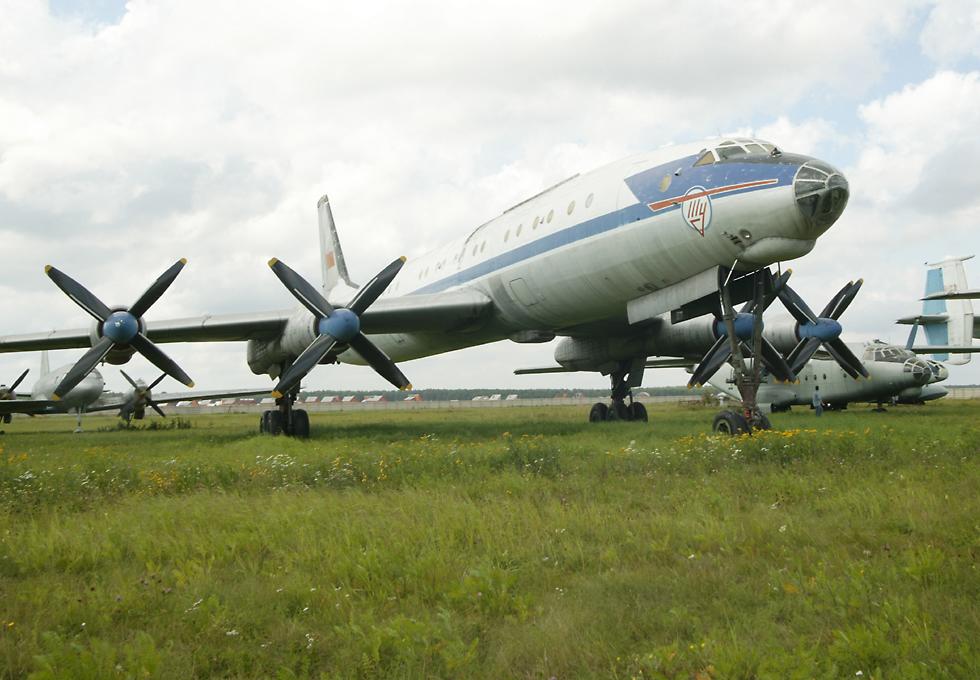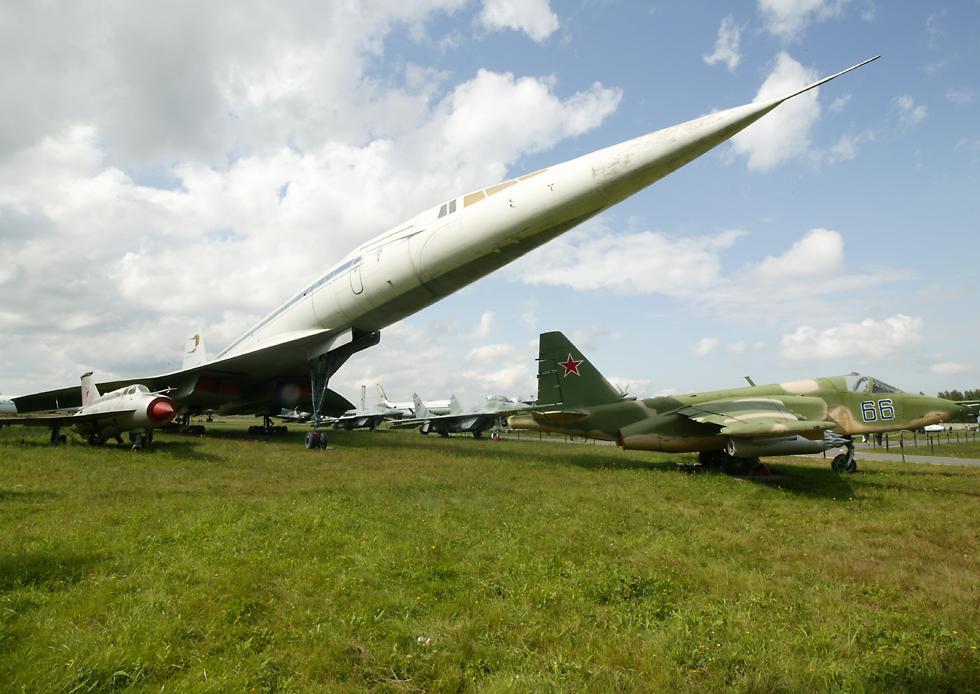Russian Air Force Museum at Monino
|
In August of 2005 I made my way to Russia, hungry to see some Russian military aircraft flying at the MAKS airshow. Also high on my list of planned activities was a visit to the official Russian Air Force museum at the town of Monino, about an hour's train ride north of Moscow. The museum used to be operated by the air force but it's now independent, which means you no longer need an invitation to visit. This is the view from the main gate. |
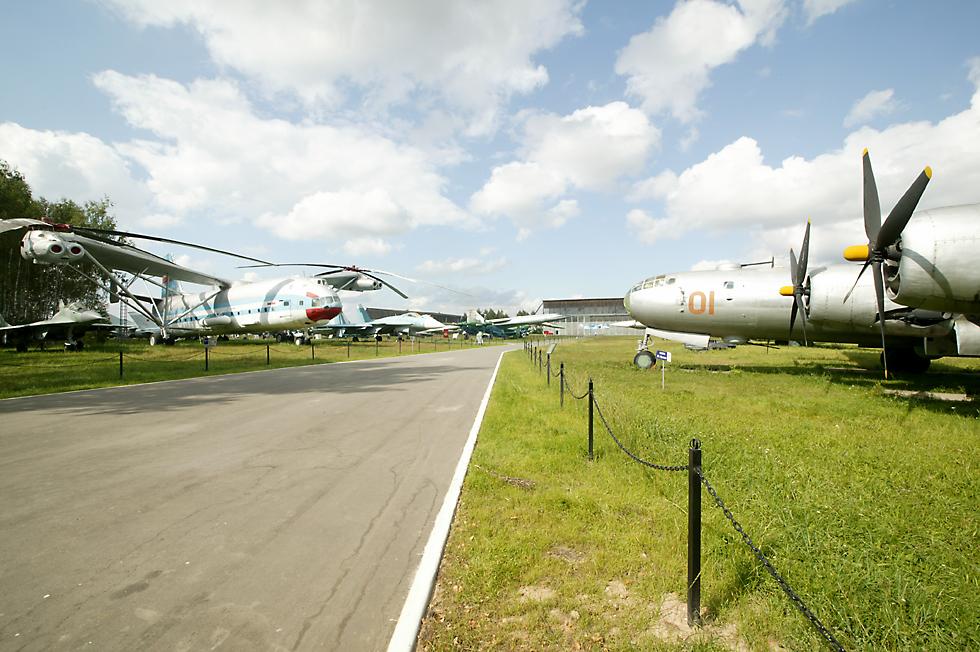 |
|
At the top of the list of things I wanted to see was this helicopter, the largest which has ever flown. It has the NATO code name "Homer" and is usually referred to as the Mi-12, however since it never entered production its correct name is actually V-12. Two or three prototypes were built and did quite a bit of flying, including a trip across Europe to the Paris Air Show. Depending on which source you believe, this was either in 1965, 1971, 1981 or 1985; as far as I can tell 1971 is the correct date. The V-12 used two of the power plants and rotors from the already massive Mi-6 "Hook", which you can see later on this page and also in Vietnamese Air Force colours. The fuselage is 37 meters long and 12.5 meters high (121 x 41 feet), the rotors are each 35 meters (114 feet) in diameter and it can lift up to 25 tonnes (55,000 pounds) of cargo, though in a special record-breaking effort in 1969 it lifted 40 tonnes (88,600 pounds) to a height of 2250 meters (7400 feet). With a more normal load the maximum range was a very useful 1000 kilometers (625 miles). |
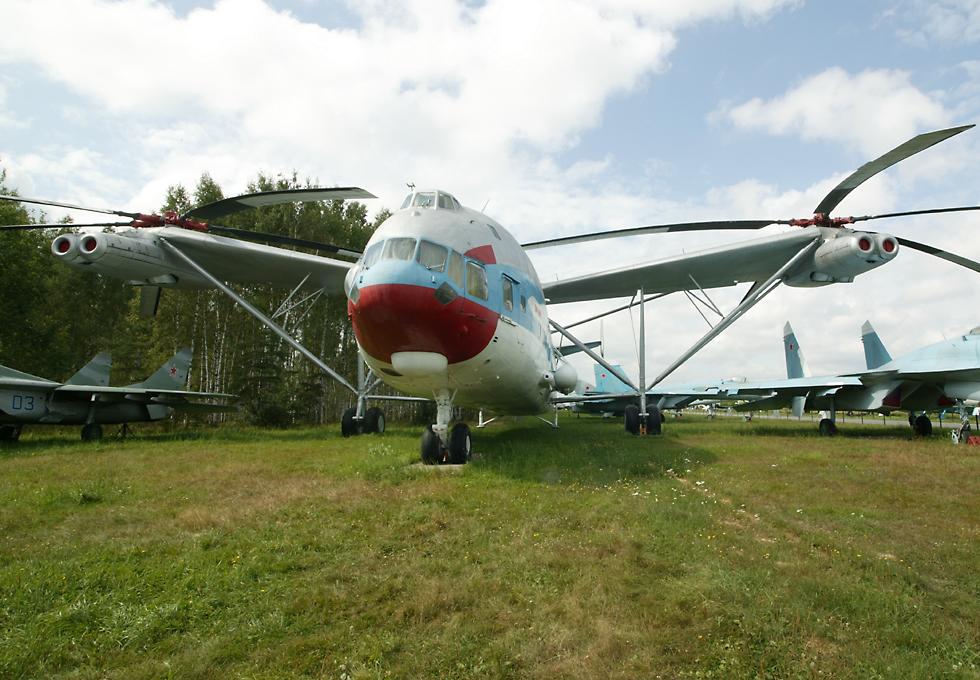
|
